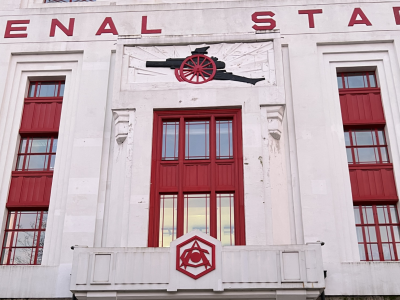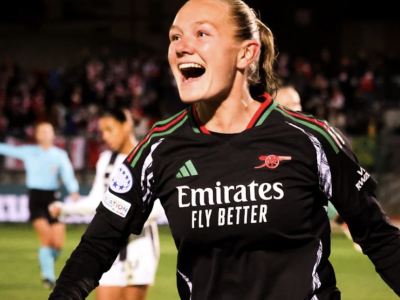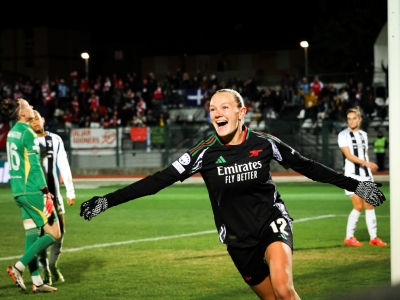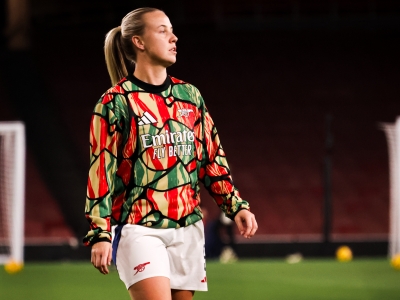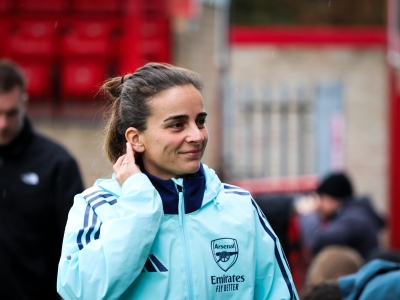So it looks like Tottenham Hotspur have been granted their wish. Their application for public funding to make the Northumberland Park Development Project a reality has been accepted by the powers that be. Spurs have agreed a £27 million funding agreement, which will include £18 million directly from Mayor Boris Johnson’s £50 million fund, put together in the wake of the riots in order to regenerate affected areas. Of Boris’s overall budget, £20 million has come directly from central government to be invested specifically in the Tottenham and Croydon areas as a result of their being the worst affected by the riots of last August. What this figure will include will be £6 million invested via Haringey Council in highways and parking improvements, and a district-wide heating and power scheme, with the remainder focusing on public transport and infrastructure improvements. A further £9 million will also come from the coffers of Haringey Council ‘towards new and improved public spaces, heritage work and environmental improvements in North Tottenham’.
Doesn’t that sound fair on the face of it? After all, won’t the local population – among the poorest of the great metropolis – benefit from improved infrastructure, transport and public spaces? Well, the fact of the matter is that those amenities would have needed to have been provided anyway if a new stadium had been built by Tottenham Hotspur in the area, under what is known as a ‘Section 106 Agreement’. In essence, local planning authorities come to an agreement over monies paid by developers to offset the costs of the external effects of their development. If we take as a hypothetical example a developer that wanted to build 200 new houses in any given area, there would be obvious effects on local schools, roads etc. which the Local Authority would have to deal with. Often, in that situation, there will be a s106 agreement as part of the granting of planning permission – for example, the developer might agree to make a contribution towards the provision of new schools to deal with the increased number of pupils brought in by the development. Tottenham Hotspur, therefore, would have had to foot the bill for developments such as infrastructure and transport improvements if they had wanted to build their significantly-larger new stadium in the Haringey area.
However, as stated here by a local newspaper, the Tottenham & Wood Green Journal - ‘It is thought the money (provided by the public purse) would effectively subsidise Spurs’ compulsory payments to the council to carry out infrastructure and other improvements in the area; Haringey paying Spurs a lump sum, only for Spurs to pay it straight back to them.’ The BBC News website, in an article back in September, also reiterates this point, stating that Haringey Council had ‘agreed to scale down a list of community projects it wanted Tottenham to contribute to, saving the club a further £8.5m’. The amount that Tottenham Hotspur has been asked to contribute by Haringey Council as a s106 agreement amounts to £17 million, which is roughly around 3% of the overall development costs of the Northumberland Park Development plan. This is a comparatively low figure in comparison with other s106 agreements made in relation to similar developments – particularly the Ashburton Grove development, where Arsenal paid £60 million alone for a new state-of-the-art waste-recycling centre at Lough Road, and also included £7.6 million to upgrade local transport links, as well as a sum to provide affordable housing and the relocation of 83 businesses from the former Ashburton Grove Industrial Estate. As stated at the time by Islington Council leader Steve Hitchins, Arsenal was required to pay ‘the highest proportion of s106 improvements compared to the size of development, in any scheme in the country’.
In contrast, despite the relatively low figure asked of Spurs, it seems it had done little to please them during their negotiations with the GLA. A close source quoted by the London Evening Standard stated that - ‘There is an extremely generous deal on the table. This is a sizeable chunk of public money. We cannot understand why the club is dragging its feet if it claims to be committed to the area’. When I initially wrote an article on this subject back in July, in response to Spurs’ initial application for public funds, there was a deluge of responses from Spurs fans avidly asserting that Arsenal had received public funds for building Ashburton Grove. However, as can be seen here in a statement from Tottenham MP David Lammy - ‘No public money was given to Arsenal at any point over the building and development process. This is quite clear in a letter sent from the Chief Executive of Islington Council to my colleague Jeremy Corbyn, the MP for Islington North.’ The source of misinformation to the contrary is clearly identifiable – various quotes made by Spurs CEO, Daniel Levy, on the subject. In referring to Spurs’ application for planning permission, Levy states that ‘the application also includes S106 costs in the region of £17m, relating to requests for contributions from Council departments and Transport for London as part of the planning consent. Meanwhile this development has not attracted a penny of public money… this is in contrast to the stadia developments of Arsenal and Wembley which were both awarded public sector assistance. These developments required substantial public sector intervention and assistance and would not have progressed without the injection of public sector money.’
However, regardless of who received public funding and who didn’t, surely Tottenham Hotspur are very much needed in the borough of Haringey at such a time of economic woe? Well yes, they very much are. Tottenham has the highest unemployment rate in London and the eighth-highest in the UK as a whole. The Haringey Independent also stated in June 2011 - ‘Figures show that in Tottenham, there are just 121 registered vacancies, with more than 6,000 people looking for work – meaning there are 54 people looking for every job’. 80% of the entire borough’s unemployed reside in the Northumberland Park Ward where White Hart Lane is situated; in fact it has the highest unemployment rate of all of London’s 634 council wards. The largest employer in the borough is Haringey Council, who have had 23% in annual cuts imposed upon them by central government, meaning that one in five council workers faces redundancy. Tottenham Hotspur are the largest Private Sector employer in the Borough, and probably the highest contributor of business rates too. As with most football clubs, there are also numerous smaller businesses that are reliant on the income that match day brings and that will subsequently go to the wall should Tottenham up sticks and leave the area.
The essence behind Tottenham Hotspur’s bid for public funding, however, is the use of Machiavellian tactics to achieve their ends, such as their disingenuous concern for the plight of the natives who are, in reality, merely a human shield against criticism aimed at Spurs for laying claim to money from the diminished public purse to achieve their financial ends. As the link between the Northumberland Park Development Project and the creation of long-term employment for the locals is a tenuous one at best (in reality, it can justifiably be compared with enticing a starving dog with a rubber bone), it can be said that Spurs are deliberately playing on the fear of the dire consequences that would be inflicted upon the local populus should Tottenham Hotspur not get their own way and leave the borough. After all, Tottenham Hotspur were merely asked for £17 million to contribute to the extra strain they will put upon resources in Haringey should their project be given the green light. Seeing that, in the transfer window before last, Chelsea had bid £40 million for Luka Modric, £17 million is a figure they could easily have stumped up.
Also, in an era of diminished public funds, what needs to be taken into account is the degree to which the needs of the population of North Tottenham are any more pressing than that of other parts of the metropolis also greatly affected by both the double-dip recession and the riots of last August. London Mayor Boris Johnson has taken a sudden interest in investing in the transport infrastructure of North Tottenham; however, on his arrival at City Hall nearly four years ago, he made a bonfire of many transport projects, claiming them to be commercially-unviable in the wake of the credit crunch. Two such projects in areas hit by the riots included an extension of the Croydon Tramlink and a cross-river tram from Peckham to Camden. Others in areas of long term decline with chronic under-employment include the extension of the DLR to Dagenham Dock and the Thames Gateway Bridge from Beckton to Thamesmead. In mitigation, Boris (who ironically resides in Highbury Fields, and can often be seen jogging through the area) stated that - ‘What we want to do is stop pretending the tooth fairy will come. Some of the plans we just don't have the money for and the others were never very good ideas anyway’. Why so hard-nosed on ideas such as these to regenerate run down areas of the metropolis, but so accommodating of others?
Well, Tottenham Hotspur is 4% owned by Lord Ashcroft who is open that his involvement is for investment purposes only – though allegedly not quite so open in other areas regarding his finances. In the same week that Spurs came to an agreement with City Hall on public funding, Panorama highlighted the alleged undeclared links between Lord Ashcroft and a bankrupt construction company in the Caribbean tax-haven of the Turks and Caicos Islands. Ashcroft is not only a Conservative Party donor, but also the largest donor in British political history. Ultimately then, no great surprise that a Tory mayor was so forthcoming with providing public funds for a project that includes upgrading transport links and that would ultimately enrich the party’s very own ‘tooth fairy’, serial tax-dodger Lord Ashcroft.
In my last article on this subject, I had also raised the issue of who effectively owned Tottenham Hotspur and the degree of their contribution to the public purse – i.e. ENIC, Joe Lewis and his non-domicile tax-exile status. I had this point in response, among others, from a Spurs fan within the comments section - ‘I am afraid you are not properly informed regarding Joe Lewis. He effectively has nothing to do with the club. One arm of his business (ENIC) has majority shares in the club, headed by Mr Levy. It's a PLC, or hadn't you noticed that?’ However, Joe Lewis’s involvement in the day-to-day running of Tottenham Hotspur is neither here nor there. The main beneficiary from ENIC selling their 85% share of the club will be tax-dodging banker, Joe Lewis. And believe me - once the ground is completed, Tottenham Hotspur will be sold on for great profit - at a value inflated by taxpayers’ funds that will ultimately enrich those with very broad financial shoulders, hiding away in a Caribbean tax-haven, who carry nothing of the financial burden that we are supposedly ‘all in together’. And, ultimately, it is they and not the beleaguered underclass of Haringey who will benefit from allowing Tottenham Hotspur public funds to build their new stadium. Register your displeasure now, before it’s too late.


